|
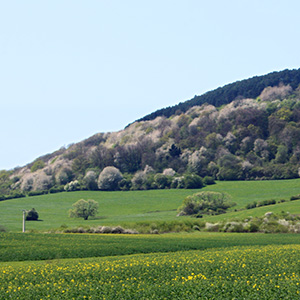 |
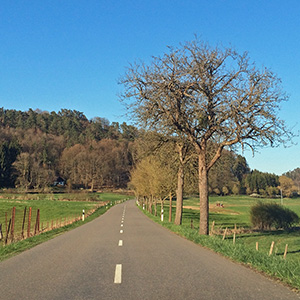 |
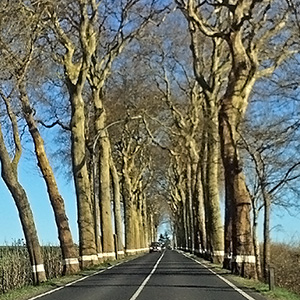 |
|
The southern part of Luxembourg, just a few kilometers from the French border, in mid-April, with many trees in bloom. |
The road (#105) from Hobscheid to Septfontaines, in Luxembourg. |
On highway 12 on our way to Luxembourg City from Septfontaines, in central Luxembourg. |
|
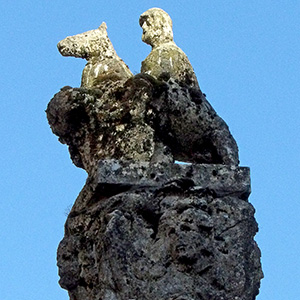 |
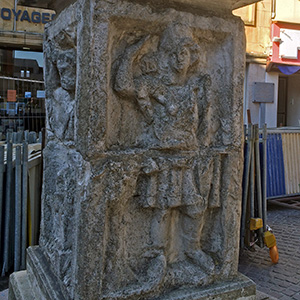 |
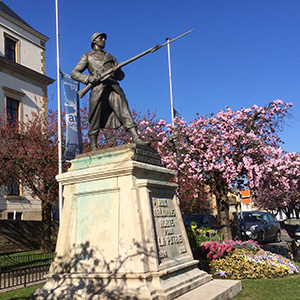 |
|
Arlon has this column at the intersection of Grand Rue and Rue Etienne-Lenoir; the column dates to the 3rd century of the common era. That is Juptier-Taranis riding a horse and trampling an anguipède on top of the approximately 1,800 year-old monument. Taranis was the Gallic version of Jupiter, a personification of God’s divine nature in the aspect of the heavens, earth, and lightning. |
Each of the four sides of the 3rd century Jupter-Taranis column in Arlon has a fine carving showing a Gallo-Roman person. The column has not been standing in Arlon for 1,800 years; it was buried, lost, and forgotten, and then recovered when it was discovered in an archeological dig back in 1972. |
A more modern sculpture in Arlon is the fine monument to those from Arlon who died in the Great 1914-1918 War. The statue was made in 1919 by Arlon’s famous sculptor, Jean Gaspar (1861-1931). The flowers and trees looked lovely on April 18th (2015), when we visited for the afternoon. |
|
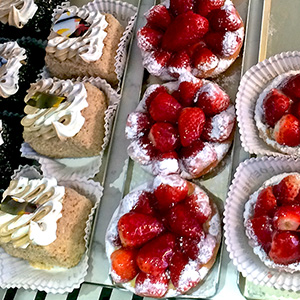 |
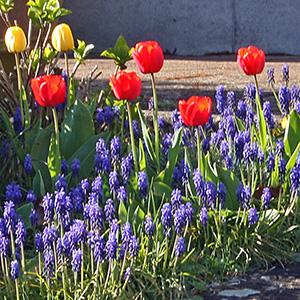 |
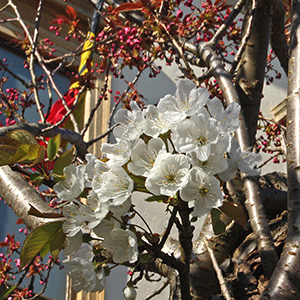 |
|
Treats available in Les Péchés mignons du Goethe on the Rue des Capucins in Arlon, Belgium. |
Grape Hyacynths and tulips were looking good on April 18th in Arlon. |
Trees were in blossom, or were about to burst into flower. |
|
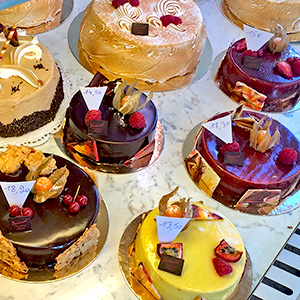 |
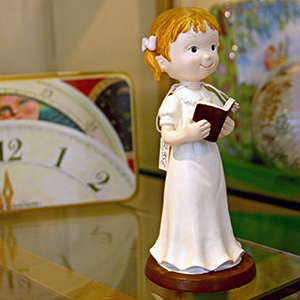 |
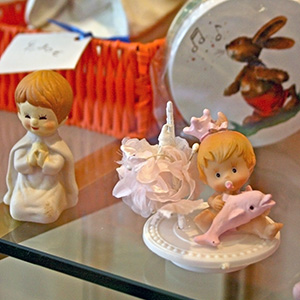 |
|
Cakes, probably made by Eric Mann in Les Péchés mignons du Goethe on the Rue des Capucins in Arlon, Belgium. |
In Les Péchés mignons du Goethe there was shelves filled with cute (“mignons” is an adjective for “cute” in French) figurines and Easter decorations. Some, like this little girl holding a hymnal or bible, were for sale. |
While many of the cute objects displayed or presented for sale in Les Péchés mignons du Goethe were related to Easter (which had recently been celebrated), others were just cute, like this baby holding a tiny dolphin. |
|
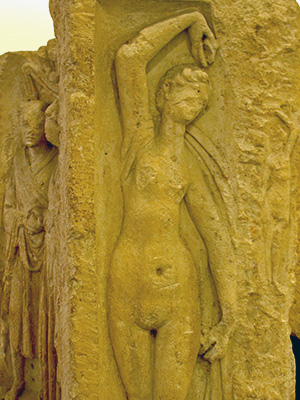 |
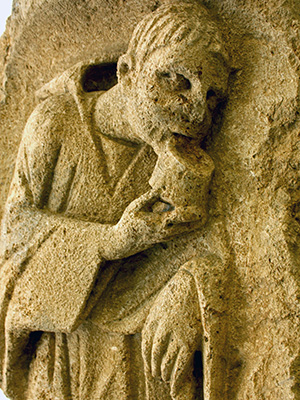 |
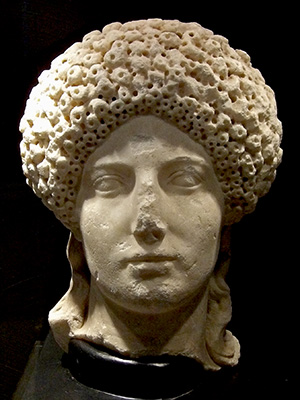 |
|
Roman Dancer in the archeology museum of Arlon, Belgium (Orolaunum, Gallia). |
Roman man drinking in the archeology museum of Arlon, Belgium. |
Roman woman (a matron of Orolaunum Vicus) in the archeology museum of Arlon, Belgium. |
|
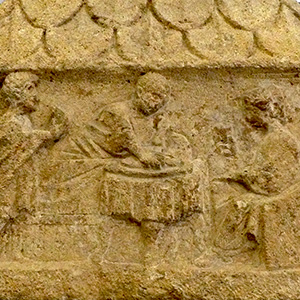 |
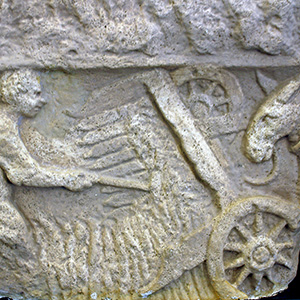 |
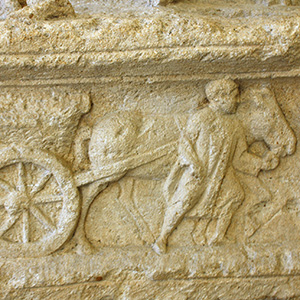 |
|
A Roman woman enjoys a meal of fish at her table in her home, depicted in this stone relief in the archeology museum of Arlon, Belgium. |
Roman man working with a harvest machine, a form of ancient Gallo-Roman technology depicted in this special stone carving, watched by a donkey, in the archeology museum of Arlon, Belgium. |
Roman man with a cart and a horse in the archeology museum of Arlon, Belgium (Orolaunum Vicus, Gallia Belgica). |
|
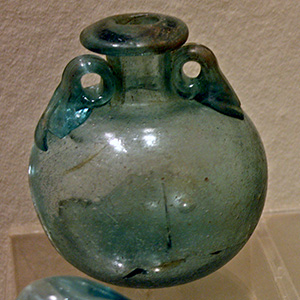 |
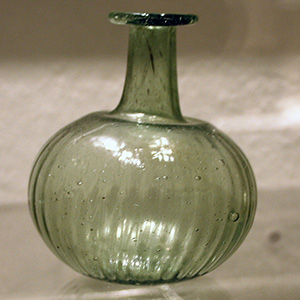 |
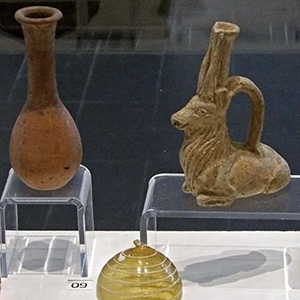 |
|
Roman glass in the archeology museum of Arlon, Belgium. |
Roman glass in the archeology museum of Arlon, Belgium. |
Roman vases in the archeology museum of Arlon, Belgium. |
|
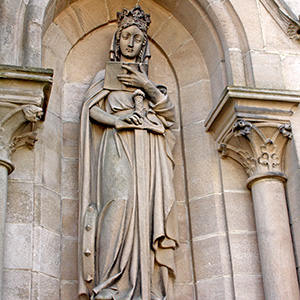 |
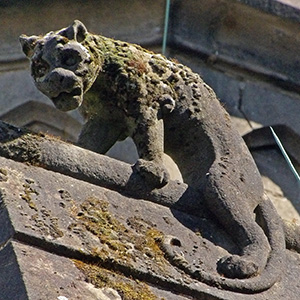 |
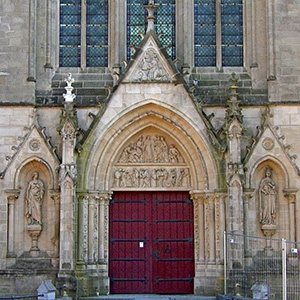 |
|
Statue in a niche on the exterior of the parish church of Saint-Martin. |
A stone lion on top of the roof of the parish church of Saint-Martin in Arlon. I wonder if this stone work on the church (which was completed in 1914) may date to the earlier Saint-Martin church that dated to 1558 |
The door leading into Saint-Martin, a church in Arlon built between 1907 and 1914, and consecrated in 1937. The first Saint-Martin church in Arlon dated to the 8th century, but this is the third Saint-Martin church. |
|
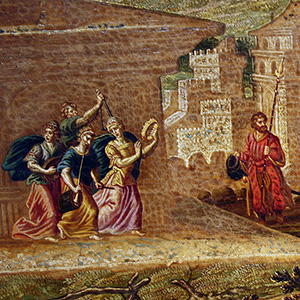 |
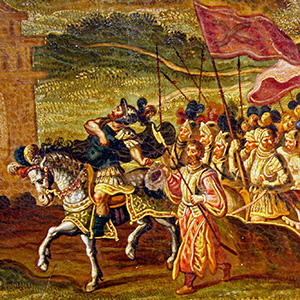 |
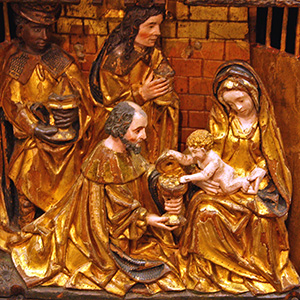 |
|
Antonio Tempesta (1555-1630) is given credit for this work showing the biblical story of Jephte. |
Here is the victorious war chief of the Hebrews, Jephte, arriving home after swearing that he would dedicate to God the the first one he saw upon returning home. There is some dispute about whether Jephte sacrificed his daughter, as is depicted in this work, or merely turned her into something like a nun, unable to marry any men. |
This is a detail from the Fisenne Altarpiece, which is in the museum Gaspar in Arlon, Belgium. The alterpiece was made around 1510 in Antwerp, and then the people of Fisenne had it in their church until that church fell into disrepair, and then they sold it to the Archeology Institute in Arlon, using the money from the sale to restore their church. |
|
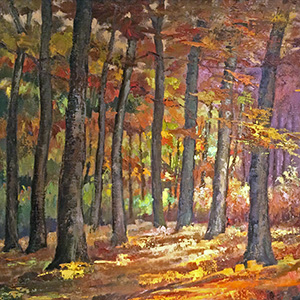 |
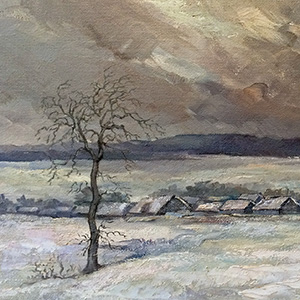 |
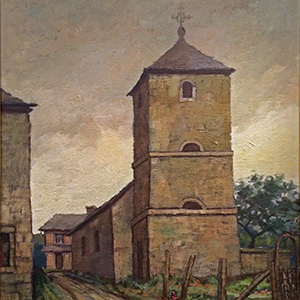 |
|
An autumn scene of the forest floor (Sous-Bois) in Frassem, an area near the town of Arlon. This is one of the paintings by Lucien Bidaine (1908-1996) on exhibit in 2015 when we visited Arlon. |
This 1973 winter landscape by the Belgian painter, Lucien Bidaine was displayed in Arlon, his hometown. |
The old church of Frassem, painted by Lucien Bidaine after 1949. |
|
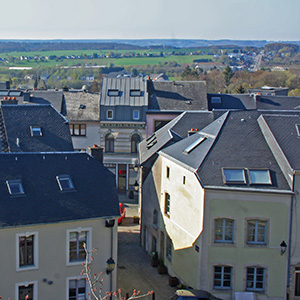 |
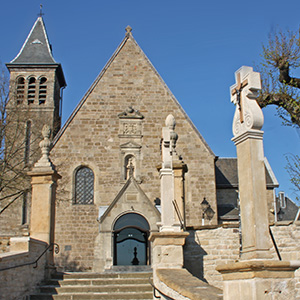 |
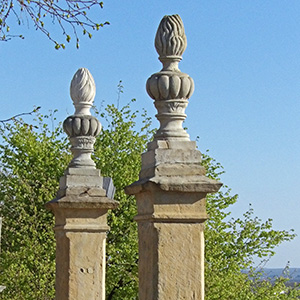 |
|
Looking northwest from Saint-Donat Church toward Viville. the major road stretching toward the horizon on the right is the N4 going toward Attert and Martelange. |
Looking up the steps of the Montée Royale toward Saint-Donat Church Much of the church was built in 1621 by Cpuchin monks; they used the stones of the ruined 11th century castle that had been on the hill, but even that castle probably was built with stones originally prepared in the days of Orolaunum Vicus, the Gallo-Roman city that has become today’s Arlon. |
There are fine views of the Luxembourg province of Belgium from the grounds of Saint-Donat Church. The Grand Duchy of Luxembourg is nearby to the east, and can be seen on the horizon. France is not far to the south. |
|
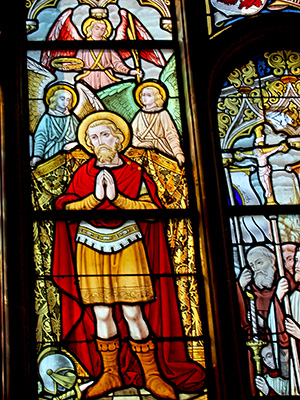 |
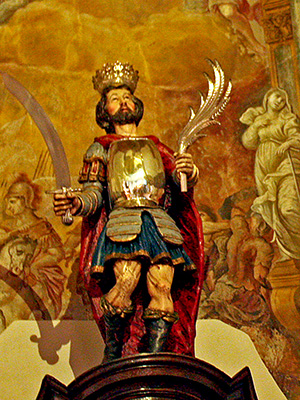 |
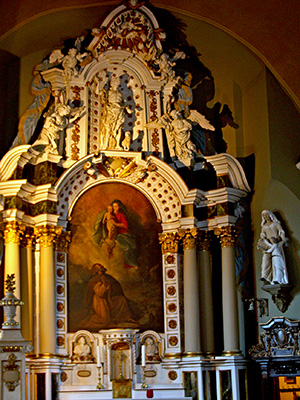 |
|
Stained glass window in Saint Donat Church in Arlon, Belgium. |
A statue of Saint Donat in the church (Arlon, Beligum) |
Inside Saint Donat Church. |
|
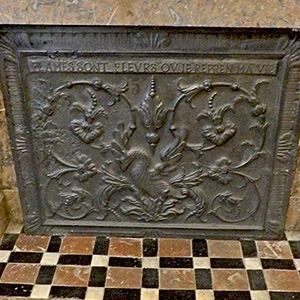 |
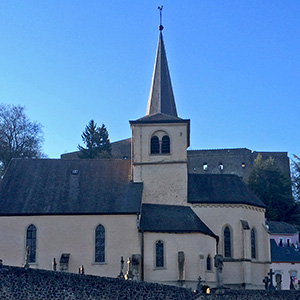 |
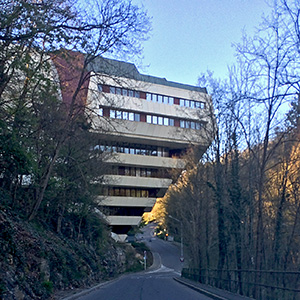 |
|
Fireplace in the Gaspar museum in Arlon, Belgium. |
The Saint Martin Church (Eglise Saint Martin) in Septfontaines,Luxembourg; and behind it you can see the castle. |
The Luxembourg Congress building, as seen from Rue Jules Wilhelm, in Luxembourg City |
|
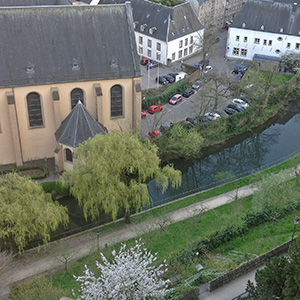 |
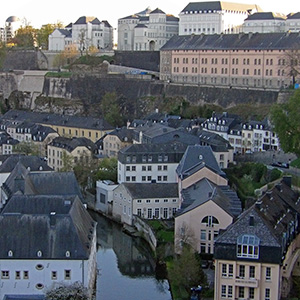 |
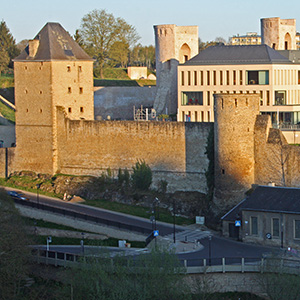 |
|
Looking down at the Alzette from the Casemates du Bock, with the Church of Saint Jean du Grund visable. It was April 18th, and the willow trees had their leaves. |
A view south from near the Saint Michael’s Church and the Chemin de la Corniche The white buiding in the lower left corner of the small image above is the National Museum of Natural History for Luxembourg. |
The Plateau du Rham, Luxembourg City. It was fortified and inhabited in Gallo-Roman and medieval times (the towers date to the medieval era), as the Alzette forms a natural moat on three sides. Near the end of the 17th century, four barracks were constructed there, with 700-880 beds, allowing a large garrison. In later years, there was an orphange there, which was converted to a retirement community for impoverished elderly in 1893. |
|
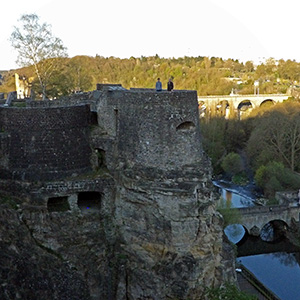 |
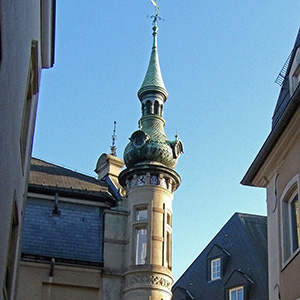 |
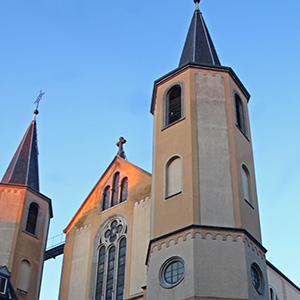 |
|
The Bock Casemates are all that remain of the tremendous fortifications that were otherwise demolished in the 1870s. The fortified castle here (first established by Count Siegfried in 963) was the nucleus of the fortified urbanized area that is now Luxembourg City. |
This is the view looking down Rue du N toward the Banque BGL BNP Paribas situated where Rue du Palais de Justice splits into Rue Wiltheim and Rue de la Boucherie. Luxembourg City is famous for its modern architecture, but it has charming older spires like this one, dating from 1897. |
The St. Alphonse church on the Rue des Capucins in Luxembourg City, where the International Catholic parish holds it’s English-language services. |
|
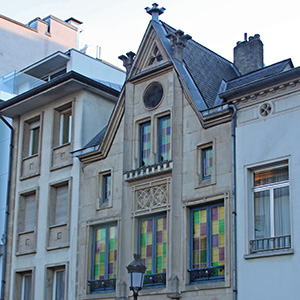 |
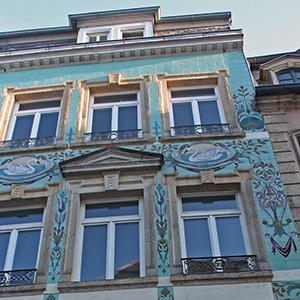 |
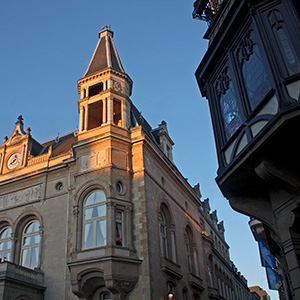 |
|
Another of the lovely buildings in Luxembourg City. |
In Luxembourg City, the former "7 La Librairie" (now "Coiffure Emotions") at number 4 on Rue de la Boucherie has a memorable facade. |
This is the Cercle Cité, in Luxembourg City, on the Place d’Armes square. The building contains an art gallery, conference center, auditorium, and salons. |
|
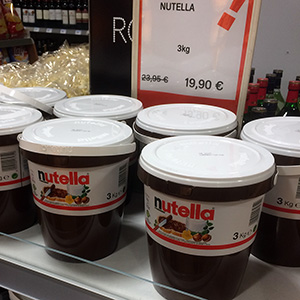 |
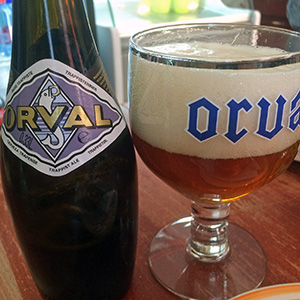 |
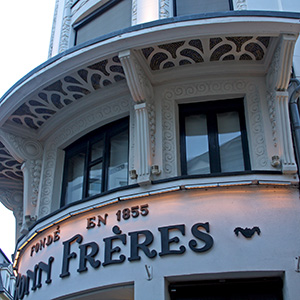 |
|
It seems the people of Luxembourg, or the visitors driving through, enjoy Nutella, and will purchase three-kilogram buckets of the sweet hazelnut-chocolate spread. The price for 3 kilograms seems reasonable. |
The Orval Trappist Ale is brewed at a monastery only about a 30-minute drive from Arlon. It is an unusual ale. Just look at how much foam it makes when it is poured. |
The Bonn Frères furniture store in Luxembourg City at 9 Rue Philippe II. |
|
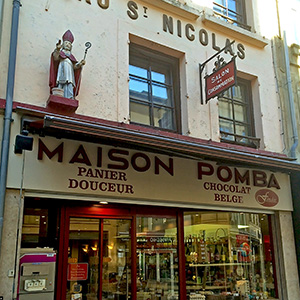 |
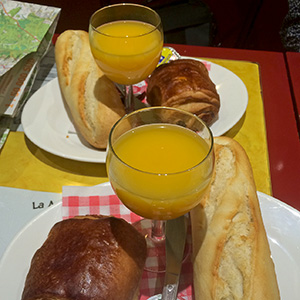 |
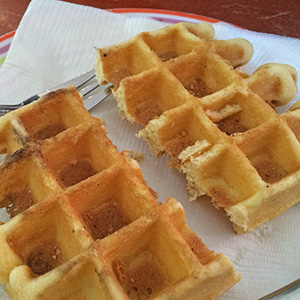 |
|
We had some snacks in this place, the Maison Pomba, a bakery-grocery store specializing in Belgian sweets, chocolate, pastries, and light meals. It is an older shop, having been established centuries ago. |
Here are the snacks we enjoyed in the Maison Pomba, a very old bakery and cafe in Arlon. |
After our stop in the Maison Pomba, we wanted to try more Belgian snacks, and so we made our way around the block to Les Péchés mignons du Goethe, on Rue Des Capucins. Here we tried a variety of pastries, including two types of Belgian waffles. |
|
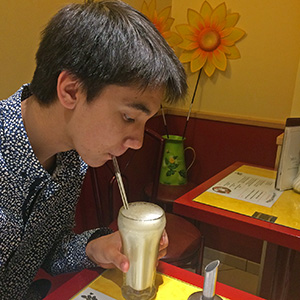 |
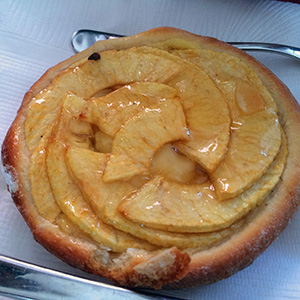 |
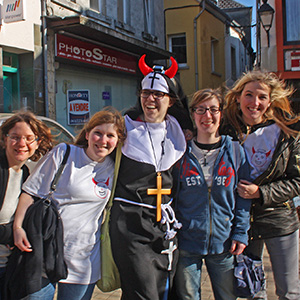 |
|
Arthur enjoys a Belgian milkshake in Maison Pomba. |
Jeri enjoyed this apple tart, probably created by Eric Manns, the chef at Les Péchés mignons du Goethe. |
This girl in a nun’s habit with devil horns was about to be married, and her friends took her around Arlon on a sort of scavenger hunt. One of her tasks was to collect a certain number of kisses. Arthur and I helped her with that particular duty. |
|
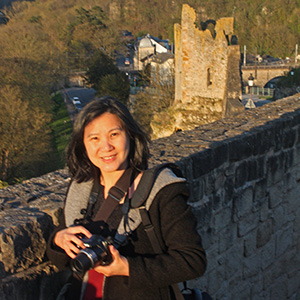 |
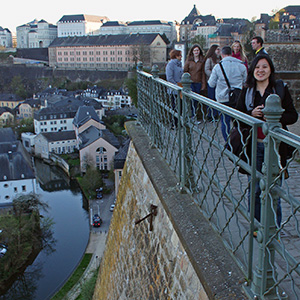 |
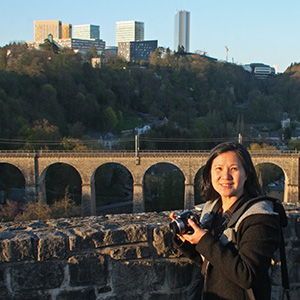 |
|
Jeri stands at the fortification where the European and Luxembourg flags fly over Montée de Clausen. |
Jeri stands on the Chemin de la Corniche with the Luxembourg old city behind her. |
Jeri stands on the oldest part of Luxembourg City with the modern buildings of the cultural, political, and European Center on the hill beyond her. |
|
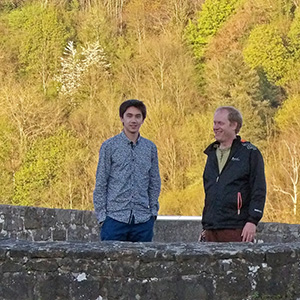 |
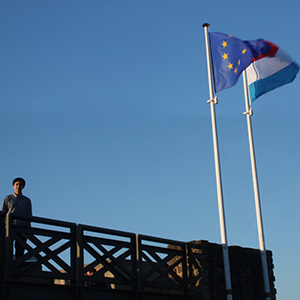 |
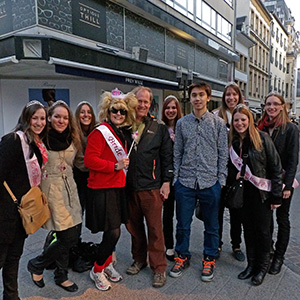 |
|
Arthur and Eric in Luxembourg City |
Arthur stands under the flags of the European Union and the Grand Duchy of Luxembourg. Luxembourg uses the blue color 299 ( Pantone matching system) whereas the Dutch use the color 286 for the blue in their flag. Also, the Luxembourg flag uses height:length dimensions of 3:5 or 1:2, whereas the Dutch flag uses a 2:3 ratio. |
In Belgium we met a bridal party, and the Arthur and I were asked to give the bride a kiss, because part of the pre-wedding ritual was that she needed to find a certain number of men she didn’t know and receive kisses from them; but in Luxembourg City, the tradition was different: we had to purchase a small thing (we chose to buy a tiny shot glass with a mini-bottle of some sort of energy drink). In both cases, we enjoyed posing with the bride and her maids. |
|
|
Other web pages with our pictures:
2015 collection of images from Europe
- Page 1, London.
- Page 2, Castille: Madrid
- Page 3, Strasbourg in March.
- Page 4, Strasbourg in April.
- Page 5, Strasbourg in May.
- Page 6, Paris.
- Page 7, The interior of the Notre Dame Cathedral in Strasbourg.
- Page 8, The exterior Strasbourg Cathedral in Strasbourg
- Page 9, Turkey: Edirne and Istanbul.
- Page 10, Austria: Salzburg.
- Page 11, Switzerland: Basel, Gimmelwald, & the Alps.
- Page 12, France: Alsace and Lorraine (Nancy, Colmar, Riquewihr, Haut-Koenigsbourg, Obernai, Nideck, Haguenau)
- Page 13, France and Monaco (Nice, Saint-Jean-Cap-Ferrat, Montpellier, Monte Carlo)
- Page 14, Germany: Bavaria (Füssen, Hohenschwangau, Munich)
- Page 15, Germany along the Rhine (Rastatt, Karlsruhe, Bruchsal, the Rhineland-Palatinate)
- Page 16, Bulgaria (Varna, Plovdiv, Kazanlak)
- Page 17, Romania (Brasov, Bran, Sinaia, Sighisoara, Biertan, Sibiu, Bucharest)
- This is page 18, Luxembourg and Arlon, Belgium
- Page 19, Italy and San Marino (Milan, Genoa, Bologna, Rimini, Citta di San Marino)
- Page 20, Catalan: Barcelona
- Page 21, Netherlands: Amsterdam
- Page 22, Denmark: Copenhagen
Thematic Pages
- Page 1, Doors (1): Doors and portals.
- Page 2, Doors (2): More doors, portals, and gateways.
- Page 3, Doors (3): More gates, doors, portals, and entrances.
- Page 4, Doors (4): Even more doors.
- Page 5, Door Fixtures (1): Decorations and fixtures on doors; door knockers or door knobs.
- Page 6, Door Fixtures (2): More door handles, door knobs, knockers, and so forth.
- Page 7, Door Fixtures (3): Another page of door fixtures such as door knobs.
- Page 8, Lamps and Lights (1): Lanterns and lamps, with several from Romania.
- Page 9, Lamps and Lights (2): Lanterns and lamps, including San Marino and Barcelona.
- Page 10, Lamps and Lights (3): More lanterns and lamps.
- Page 11, Lamps and Lights (4): Even more lights, lanterns, lamps, and so forth.
- Page 12, Flowers, Tulips (1): Keukenhof Garden and its tulips..
- Page 13, Flowers, Tulips (2): Second page of flowers, more tulips in Keukenhof Garden.
- Page 14, Flowers, Tulips (3): More tulips.
- Page 15, Flowers, Orchids (1): Flowers, mostly orchids.
- Page 16, Flowers, Orchids (2): Orchids and similar flowers.
- Page 17, Flowers, Orchids (3): Even more orchids.
- Page 18, Flowers and Plants (1): Various plants, including flowers and trees.
- Page 19, Flowers and Plants (2): Flowers and interesting plants, including mushrooms.
- Page 20, Flowers and Plants (3): Trees, flowers,ferns, and interesting plants.
- Page 21, Spires and Weathervanes (1): Weather vanes and decorative spires on top of roofs.
- Page 22, Spires and Weathervanes (2): More weathervanes, spires, and so forth.
- Page 23, Spires and Weathervanes (3): Even more decorative spires and weathervanes.
- Page 24, Shop Signs and Ornamental Ironwork (1): Fences, gates, shop signs, and so forth.
- Page 25, Shop Signs and Ornamental Ironwork (2): More shop signs and ornamental iron.
- Page 26, Domes (1): Views of round roofs and cupolas, including large domes.
- Page 27, Domes (2): Views of domes and cupolas, including some spires, interior and exterior.
- Page 28, Windows (1): A page of interesting windows.
- Page 29, Windows (2): Another page showing windows.
- Page 30, Windows (3): A page of windows, mostly stained glass windows.
- Page 31, Windows (4): More windows.
- Page 32, Jewels and Ornaments (1): Jewels and ornaments.
- Page 33, Jewels and Ornaments (2): More jewels and ornaments and decorative things.
- Page 34, Statues (1): A page full of picture of statues and sculptures.
- Page 35, Statues (2): More statues and sculptures.
- Page 36, Water features and water (1): Pools, ponds, lakes, rivers, waterfalls, and so forth.
- Page 37, Water features and water (2): Beaches, lakes, rivers, cascades, and so forth.
- Page 38, Faucets, Fountains, and Spigots (1): Mostly fountains.
- Page 39, Faucets, Fountains, and Spigots (2): Fountains and spigots or faucets.
- Page 40, Furniture (1): A page of interesting furniture.
- Page 41, Furniture (2): More examples of interesting furniture.
- Page 42, Palaces (1): A page with photos of palaces.
- Page 43, Palaces (2): More palaces.
- Page 44, Animals and zoos (1): Pictures of animals and scenes in zoos.
- Page 45, Animals and zoos (2): More images of animals and zoos.
History Timeline
Sources and diversions.

This work by Eric & Chun-Chih Hadley-Ives is licensed under a Creative Commons Attribution-NonCommercial-ShareAlike 4.0 International License.
|
|































































